Did you know that the word "Armadillo" means "little armored warrior" in Spanish? Or that the "armor" on their bodies is actually made of bone plates covered with keratin? There are about 20 different species of this unique-looking animal, all native to South America. They vary greatly in size, living habits, and distribution areas.

Here are 13 amazing facts about armadillos that you may have never heard of:
1. There is only one species of armadillo in the United States
Currently, only the nine-banded armadillo (Dasypus novemcinctus) has successfully migrated to North America, becoming the only native armadillo species in the United States. They were originally found only in the humid southern United States, but have now spread to northern areas such as Illinois and Nebraska. Global warming has led to milder winters, which is one of the reasons for their expansion.

This armadillo is very special. Each time they give birth, they give birth to four identical cubs, which come from the natural division of a fertilized egg. This "natural reproduction" method is extremely rare among mammals. When frightened, the nine-banded armadillo can also jump vertically 1 to 1.2 meters.
2. The Brazilian three-banded armadillo is a "resurrected species"
The Brazilian three-banded armadillo was once thought to be extinct, but it was not until 1988 that it was rediscovered in certain areas of South America and redefined as a "Lazarus species" (an animal that was mistakenly believed to be extinct and then rediscovered).
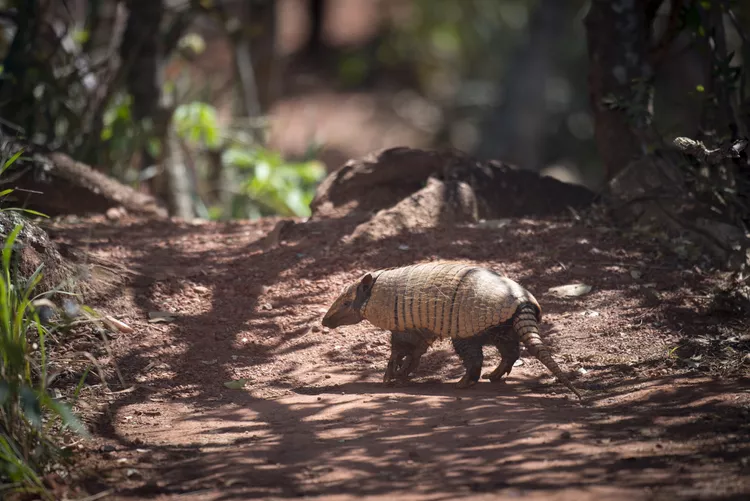
The species is currently listed as "vulnerable" by the IUCN and "endangered" in Brazil. They mainly live at night, are scarce in number, and their habitats are being replaced by large tracts of sugarcane and soybean fields. Coupled with the pressure of poaching, their survival situation is not optimistic.
3. Prehistoric "armored beast" is a distant relative of the armadillo
A prehistoric beast called Glyptodont is an ancient relative of the armadillo. This animal is huge and covered with heavy armor, and some weigh more than 2 tons. They appeared about 35 million years ago and became extinct at the end of the last ice age.
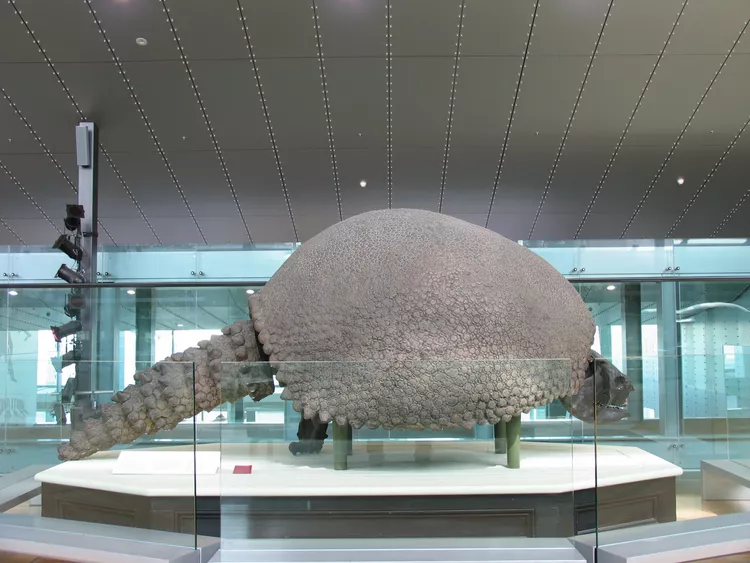
Humans hunted them for meat and used their bone armor as building materials for shelter. Scientists have now classified the Glyptodont as a member of a subfamily of armadillos.
4. Armadillos can sleep up to 16 hours a day
Armadillos are typical nocturnal animals. They spend most of their time foraging, digging holes, mating, etc. at night. During the day, they hide in burrows and sleep for a long time. They can sleep up to 16 hours a day.
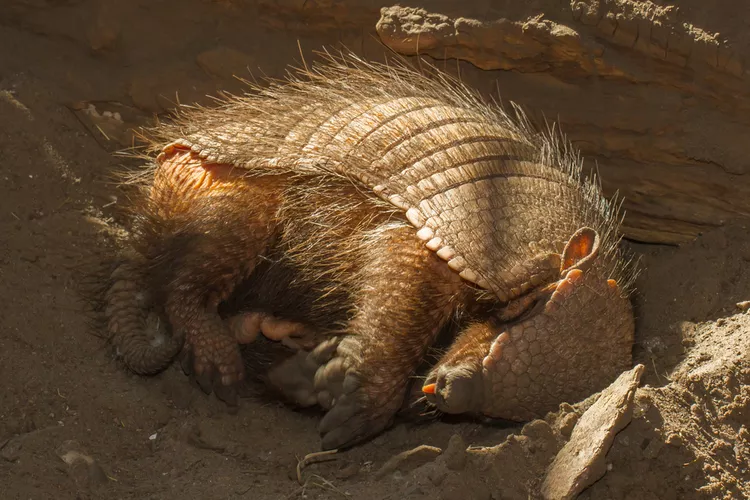
Although they usually live alone, they sometimes share caves with turtles, snakes or mice. When they are awake, they spend a lot of time looking for food. They are almost one of the most "diligent" foragers among mammals.
5. Armadillos are the only non-human animals that can spread leprosy
Armadillos are the only non-human species known to spread leprosy (now called Hansen's disease). The bacteria can survive in their bodies because armadillos have a lower body temperature.
Researchers believe that the bacteria may have been brought to America by European colonists in the 15th century and then "inherited" by armadillos. Humans may also be infected if they hunt or eat armadillo meat or even inhale spores in their feces.
6. Not all armadillos can "roll into a ball"
Many people think that all armadillos can curl into a ball when they encounter danger. In fact, only two species - the Brazilian three-banded armadillo and the southern three-banded armadillo - have the ability to completely roll into a ball.
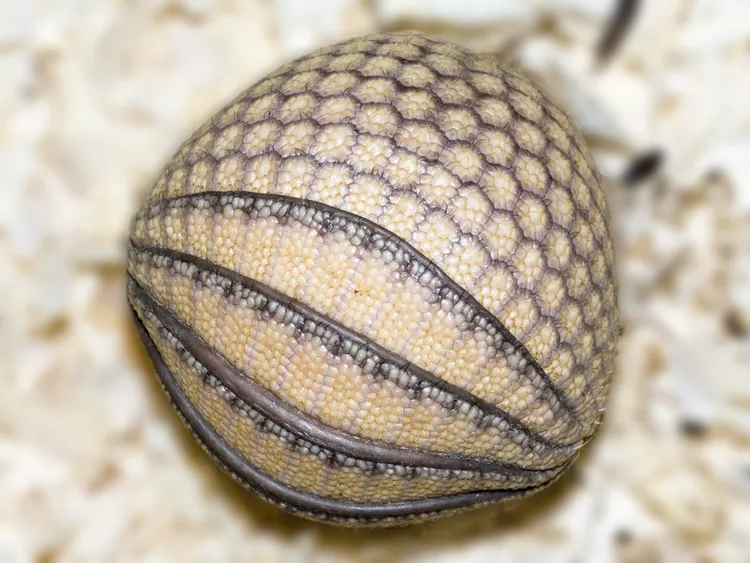
They belong to the Tolypeutes genus, with fewer body plates and a flexible structure. Most other armadillos cannot completely roll up because of their more bony plates and rigid structure.
7. The largest armadillo can weigh up to 80 kg
The giant armadillo (Priodontes maximus) is the largest armadillo in existence. Adults in the wild can weigh 45 to 130 pounds (about 20 to 60 kg), and captive individuals can even reach 176 pounds (about 80 kg), with a body length of nearly 1.8 meters.

Their front claws are particularly well developed, with a middle claw of 8 inches long, the longest claw of all mammals. The IUCN lists it as a "vulnerable species", mainly facing threats from illegal hunting and habitat loss.
8. The smallest armadillo is only the size of a palm
The Pink Fairy Armadillo is named for its miniature size and pink carapace. It is only about 10 to 15 cm long and weighs less than 100 grams. It has a vertical "scutum" on its tail, which is used to push the soil backwards when digging.
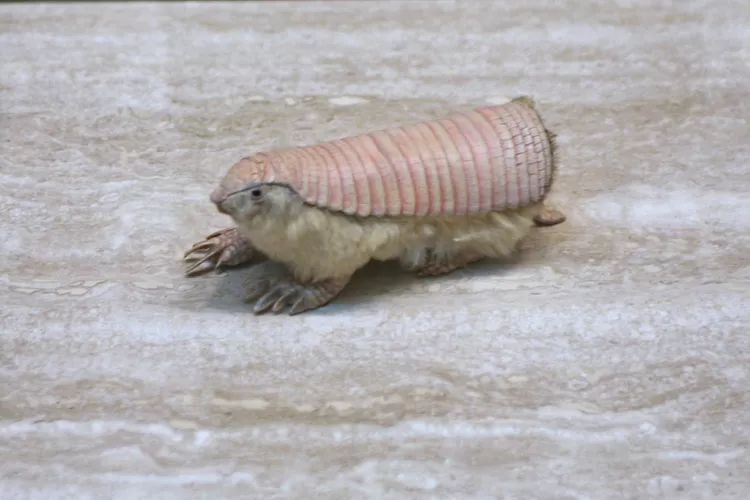
The species lives in dry sands and grasslands in central Argentina. It is listed as "data missing" by the IUCN, but there are signs that it is close to endangered. Due to its cute appearance, the popularity on social media has also led to an increase in illegal captures, and most captive individuals often die within 8 days.
9. There is a kind of armadillo that can scream
The Screaming Hairy Armadillo not only relies on its armor to protect itself, but also relies on its "voice" to intimidate the enemy. When it encounters a threat, it will emit a shrill scream similar to a siren.

They are distributed in Bolivia, Paraguay, Argentina and Chile. Although they are hunted for their meat and armor, the overall population status is currently "not endangered".
10. Only Pichi armadillos hibernate
The South American Pichi armadillo (Zaedyus pichiy) is the only armadillo known to hibernate. It stores fat before winter and drops its body temperature from about 35°C to about 14°C after entering its cave.
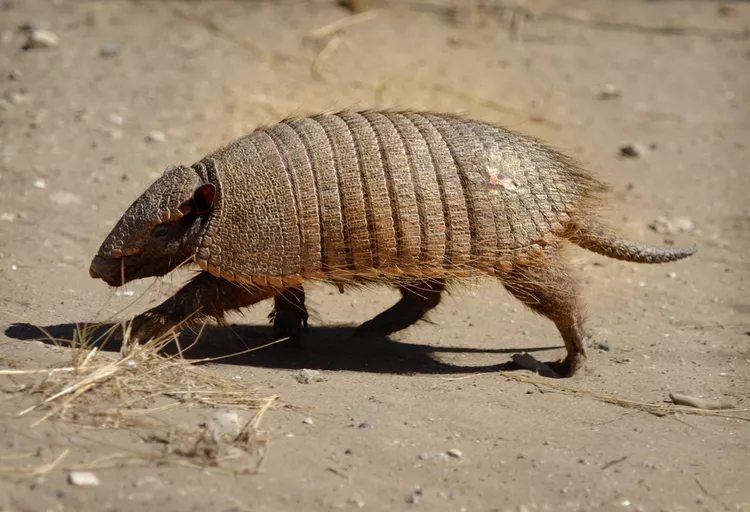
In addition to long-term hibernation, Pichi armadillos also enter a short "semi-dormant state" (called "torpor") in their daily lives, which greatly saves energy. They live in the dry steppes of Argentina and Chile.
11. Many armadillos are endangered
Although the nine-banded armadillo is in great numbers, other species are in danger. The IUCN has listed the Brazilian three-banded armadillo and giant armadillo as "vulnerable", while the southern three-banded armadillo, long-nosed armadillo, picchi armadillo and other species are "near threatened".
Habitat destruction and illegal hunting are the main threats, with mining, ranching and oil palm plantations being key factors in deforestation.
12. Armadillo shells were once used to make musical instruments
In the Andes, armadillo shells were used to make a ten-string instrument called Charango, which is an important element of traditional folk music in Bolivia, Chile, Peru and other places.

Nowadays, for the purpose of protection, more and more Charango are being made of wood or gourds. At the same time, armadillo shells were also used to make "matraca" for carnival rattles, but since 2015, such armadillo shell products have been banned from trading in many countries.
13. Armadillos are actually "good swimmers"
Despite their armored bodies, armadillos are actually very good swimmers. Not only can they hold their breath underwater for 4 to 6 minutes, they can also "walk" on the bottom of streams, swallow air to float themselves when crossing small rivers, and then paddle forward like dogs.

It is with this "amphibious" ability that they successfully crossed the Rio Grande River, allowing the nine-banded armadillo to gradually spread to most parts of the United States.
If you ever thought that armadillos were just a weird-looking "mole", then you really underestimated them. These little guys wearing natural armor are not only a miracle of evolution, but also contain countless little-known interesting stories. Want to know more about rare animals? Feel free to contact me!
animal tags: armadillos
We created this article in conjunction with AI technology, then made sure it was fact-checked and edited by a Animals Top editor.